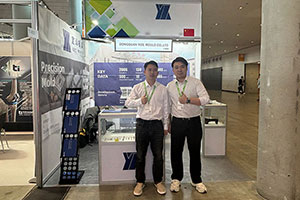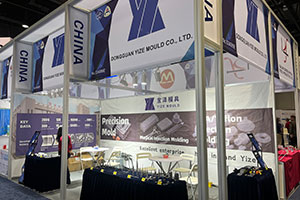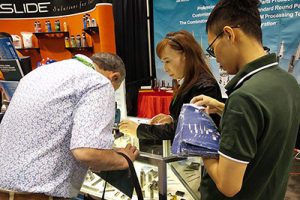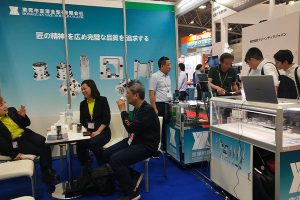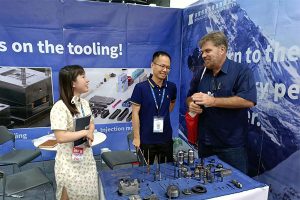The “Diverse Skills” of Quality Inspection for Tungsten Carbide Dies
In the realm of die manufacturing, tungsten carbide dies are like a “martial arts master” with superb skills. Relying on their high hardness, high wear resistance, and high thermal stability, […]
In the realm of die manufacturing, tungsten carbide dies are like a “martial arts master” with superb skills. Relying on their high hardness, high wear resistance, and high thermal stability, they firmly occupy a pivotal position. They are akin to the “cornerstone” of the die industry, and their quality directly affects the precision, performance, and service life of products. Once there are quality issues with tungsten carbide dies, it’s like the master suffering from internal power damage, and the manufactured products will be full of flaws and struggle to gain a foothold in the market. Therefore, conducting strict quality inspections on tungsten carbide dies is undoubtedly like giving this “master” a comprehensive “physical examination,” which is of utmost importance. Next, this article will comprehensively reveal the quality inspection methods for tungsten carbide dies, covering visual inspection, magnetic particle inspection, ultrasonic inspection, hardness testing, dimensional inspection, and chemical composition analysis, while also analyzing the advantages, disadvantages, and applicable scenarios of each method.
Visual Inspection: The “Eagle-eyed Glance” for Initial Assessment
Visual inspection is one of the most direct and simplest methods in the quality inspection of tungsten carbide dies, much like an experienced martial artist using their “eagle-eyed glance” to quickly assess a situation. With just the naked eye or a magnifying glass, inspectors can conduct a detailed observation of the die’s surface condition. It can swiftly identify surface defects such as cracks, bubbles, and inclusions on the die, just as a martial artist can instantly spot an opponent’s weakness. The advantages of this method are quite evident. It is simple and easy to perform and has low costs, making it very suitable for preliminary screening and rapid judgment, allowing for a quick general understanding of the die’s quality. However, it also has its limitations. Like a martial artist’s line of sight being limited to the surface, visual inspection is powerless against internal defects of the die.
Our factory business: carbide parts, mold parts, medical injection molds, precision injection molds, teflon PFA injection molding, PFA tube fittings. email: [email protected],whatsapp:+8613302615729.
Magnetic Particle Inspection: The “Mysterious Compass” for Detecting Surface Hazards
Magnetic particle inspection is a fascinating method that utilizes magnetic fields and magnetic particles to detect surface and near-surface defects in dies, similar to a martial artist holding a “mysterious compass” that can point out hidden dangers. During the inspection, magnetic particles are first uniformly coated on the die’s surface, like putting on a mysterious “cloak.” Then, a magnetizing device is used to magnetize the die. If there are defects in the die, magnetic particles will form magnetic traces at the defect sites, just as the compass needle points to the location of hidden treasures, clearly revealing the position and size of the defects. The advantage of magnetic particle inspection lies in its ability to detect surface and near-surface defects in dies with high sensitivity and reliability. However, it also has certain “pickiness.” It requires specialized equipment and professional operators, and it is only applicable to magnetic materials. For non-magnetic materials, it’s like the compass losing its magnetism and becoming useless.

Ultrasonic Inspection: The “X-ray Vision” for Revealing Internal Secrets
Ultrasonic inspection is like a martial artist possessing “X-ray vision,” using the characteristics of ultrasonic wave propagation and reflection in materials to detect internal defects in dies. During the inspection process, an ultrasonic probe emits ultrasonic waves, which are like the internal power unleashed by the martial artist, propagating inside the die. When encountering defects, the ultrasonic waves will be reflected, just as the internal power bounces back when hitting an obstacle. By receiving and analyzing the reflected ultrasonic wave signals, it is possible to determine whether there are internal defects in the die. The advantages of ultrasonic inspection are very prominent. It can detect internal defects in dies with high sensitivity and accuracy, and it can also perform non-destructive testing on the dies without causing any damage, just as a martial artist can洞察 (here, “洞察” is Chinese, the English equivalent “detect” is used above) the enemy’s internal situation without leaving any traces. However, it also requires professional equipment and operators, and it has certain requirements for the shape and size of the die, just as a martial artist needs specific environments and conditions to unleash their skills.
Hardness Testing: The “Strength Gauge” for Measuring Toughness
Hardness testing is one of the important indicators for evaluating the quality of tungsten carbide dies, similar to a “strength gauge” for measuring the die’s toughness. Commonly used hardness testing methods include Rockwell hardness testing, Brinell hardness testing, and Vickers hardness testing. These testing methods are like using different “heavy hammers” to strike the die’s surface. By measuring the depth to which the die’s surface is indented by a hard alloy ball or a diamond indenter under a certain pressure, the hardness of the die can be evaluated. The advantage of hardness testing is its simplicity and ease of operation, allowing for a quick understanding of the die’s hardness condition, just as using a gauge to quickly measure the length of an object. However, it also has its shortcomings. It can only reflect the hardness level of the die and cannot comprehensively evaluate the die’s quality and performance, just as a gauge can only measure length and cannot measure other attributes such as the weight and color of an object.
Dimensional Inspection: The “Precision Scale” for Ensuring Accuracy
Dimensional inspection is an indispensable part of the quality inspection of tungsten carbide dies, much like a “precision scale” in the hands of a meticulous craftsman, ensuring that the die’s dimensional accuracy meets the design requirements. It mainly relies on various measuring tools and equipment, such as profilometers and coordinate measuring machines, to conduct precise measurements of the die’s dimensions. Dimensional inspection can guarantee the precision and performance of products, just as a craftsman uses a precise scale to create a perfect handicraft. Its advantages are high precision and good reliability, but it requires professional measuring equipment and technical support, just as a craftsman needs superb skills and suitable tools to complete an exquisite work.
Chemical Composition Analysis: The “Chemical Secret Manual” for Analyzing Material Essence
Chemical composition analysis is an important means of evaluating the quality of tungsten carbide dies, similar to a “chemical secret manual” for analyzing the die’s material essence. By analyzing the chemical composition of the die, information such as the die’s material composition and impurity content can be obtained, thus evaluating the die’s quality and performance. Commonly used chemical composition analysis methods include spectral analysis and chemical reagent analysis. The advantage of chemical composition analysis is its ability to comprehensively understand the die’s material condition, providing strong support for the die’s quality evaluation, just as one can understand an opponent’s weaknesses and strengths by studying a secret manual. However, it also requires specialized equipment and operators, and the analysis process is relatively complex, just as it takes deep skills and patience to study a secret manual.
Comprehensive Evaluation: The “Martial Arts Masterpiece” Combining Various Skills
In actual quality inspections of tungsten carbide dies, a comprehensive evaluation is usually carried out by combining multiple inspection methods, just as a martial arts master combines the strengths of various schools to create a “martial arts masterpiece.” Through visual inspection, magnetic particle inspection, and ultrasonic inspection, defects and potential problems in the die can be identified; through hardness testing and dimensional inspection, the die’s hardness and dimensional accuracy can be evaluated; and through chemical composition analysis, the die’s material condition can be understood. A comprehensive evaluation can provide a comprehensive and accurate understanding of the die’s quality and performance, offering strong guarantees for the die’s manufacturing and use, just as a martial arts master relies on their masterpiece to stand invincible in the martial arts world.
Looking Ahead: The “New Journey” of Quality Inspection
The quality inspection of tungsten carbide dies is a crucial link in ensuring die quality and product performance. This article has detailed introduced common inspection methods and analyzed their advantages, disadvantages, and applicable scenarios. In the future, with the continuous progress of science and technology and the continuous innovation of inspection technologies, the quality inspection methods for tungsten carbide dies will become more diverse, intelligent, and efficient, just as martial arts masters continuously learn new secret manuals to improve their skills. At the same time, we should also continuously learn and master new inspection technologies, improve the professional qualities and technical levels of inspectors, and provide strong support for the quality assurance of tungsten carbide dies, jointly embarking on the “new journey” of quality inspection for tungsten carbide dies.
Related Posts
- Exploring Tungsten Carbide: Unlocking the Mysteries of Its Electromagnetic Properties
- The Market Prospect of Tungsten Carbide Processing Industry
- Exploring the Hardness of Tungsten Carbide Blades: The Hardcore Code of Industrial Edges
- Tungsten Carbide Die: The Wear-Resistant “Champion” and a Capable Assistant in Industrial Production


